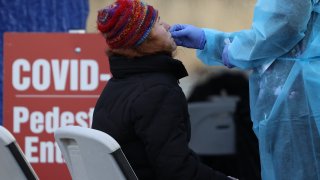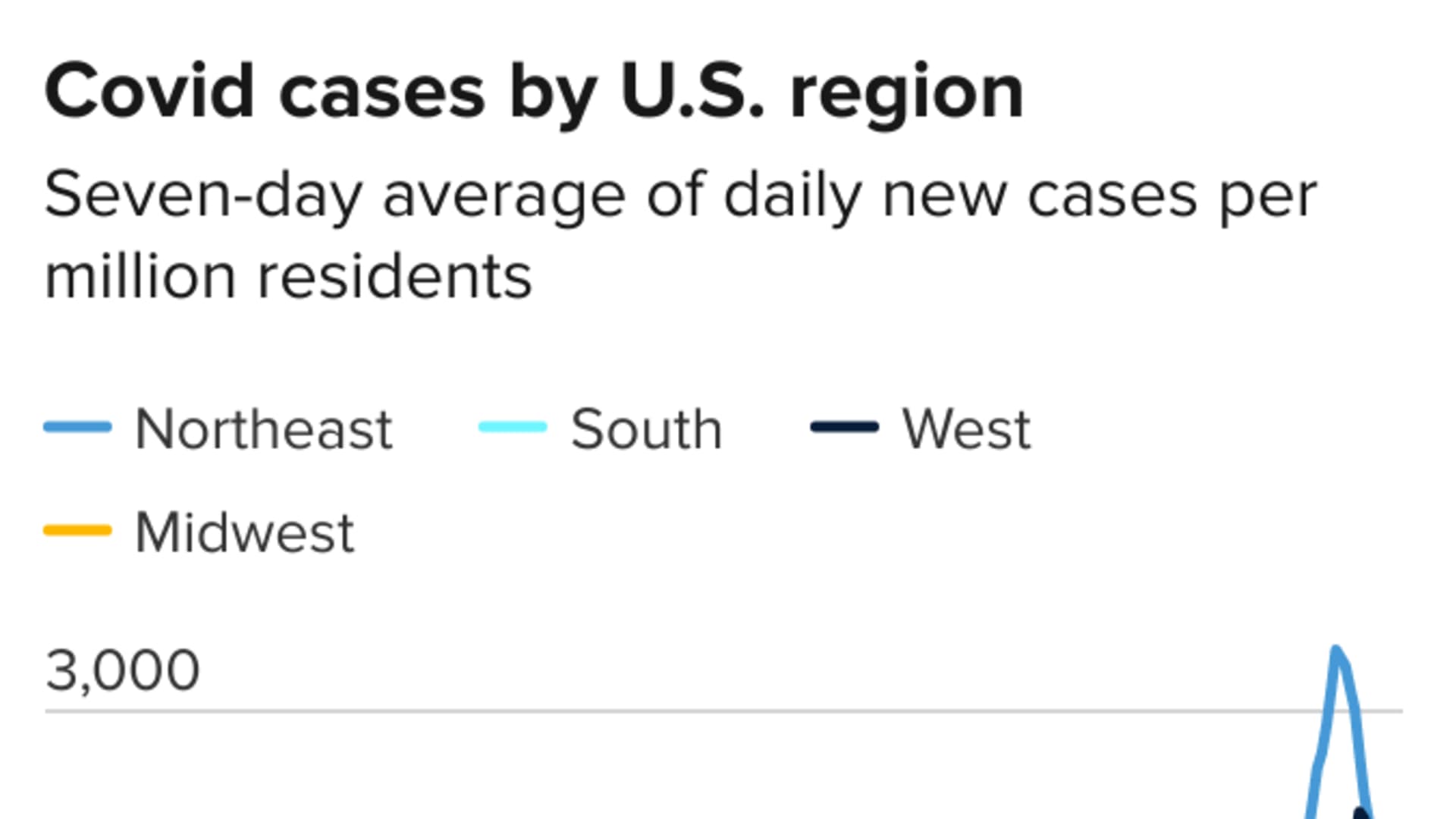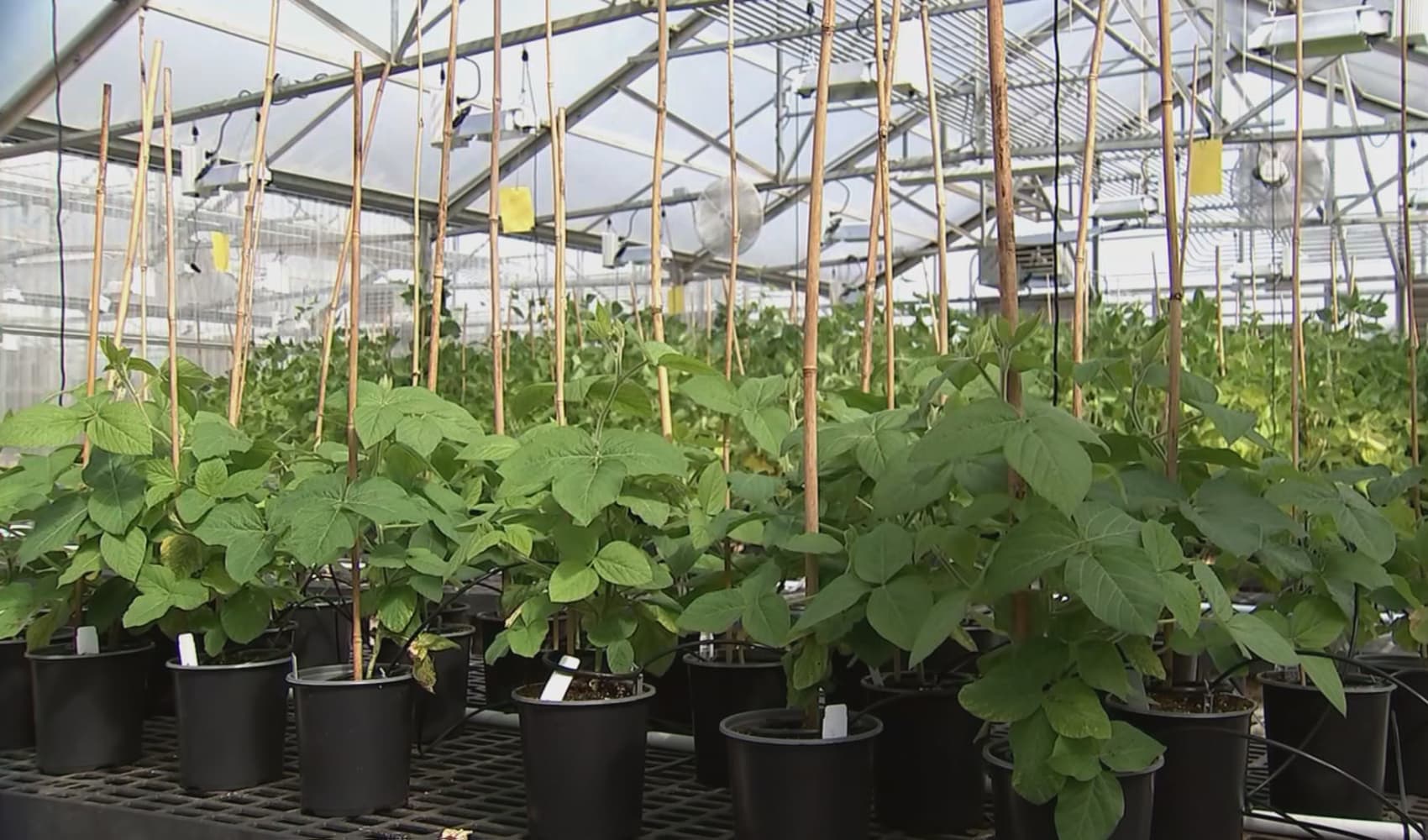
- The U.S. has reported nearly 800,000 cases per day on average over the past week, according to data compiled by Johns Hopkins University.
- That's more than three times the level seen during last winter's previous record.
- But there are signs of a possible turning point in the surge in places hit early by omicron.
Following weeks of soaring infections, the latest Covid surge is showing signs of slowing in a handful of areas hit earliest by the omicron variant — offering a glimmer of hope that this wave is starting to ease.
The U.S. has reported an average of nearly 800,000 cases per day over the past week, according to data compiled by Johns Hopkins University, more than three times the level seen during last winter's previous record. But in a handful of states and cities, particularly on the East Coast, cases appear to have plateaued or fallen in recent days.
In New York, the seven-day average of daily new cases has been declining since hitting a record high of 85,000 per day on Jan. 9, according to Hopkins data. Cases there doubled during a number of seven-day periods in late December and early January, but are down sharply from last week to an average of 51,500. In New York City, average daily cases have fallen by 31% over the past week, state health department data shows.
Get Southern California news, weather forecasts and entertainment stories to your inbox. Sign up for NBC LA newsletters.
"There will come a time when we can say it's all over," Gov. Kathy Hochul said at a press conference Friday. "We're not there yet, but boy, it's on the horizon and we've waited a long time for that."
New York is still reporting a high level of daily infections, ranking 15th out of all states, according to a CNBC analysis of population-adjusted case counts, down from the second-most just a few days ago. New Jersey also recently fell out of the top five, now ranking 20th, as the state has seen a 32% drop in average daily cases over the past week.
Money Report
In late December, Washington, D.C. had the highest number of Covid infections on a per capita basis than any other state, peaking at an average of 2,500 per day. That's since dropped to 1,700, the data shows.
And in neighboring Maryland, daily infections hit a pandemic high on Jan. 8 but are down 27% from a week ago.
In Illinois, Dr. Khalilah Gates, assistant dean of medical education at Northwestern University Feinberg School of Medicine, said you can "already kind of feel" the stabilization of hospitalizations. As of Sunday, the state reported a seven-day average of about 7,200 patients hospitalized with Covid, according to Department of Health and Human Services data, up 4% over the past week, a more modest increase than the 30% weekly growth seen just two weeks ago.
"There's not that influx that we initially had in the beginning of the surge and things are kind of just puttering," she said. "And if that lasts for, you know, five to seven consecutive days, I think you start to breathe a little bit easier saying, OK, like we've kind of gotten over this surge, got through this surge as well."
Cases are also falling in South Africa and the United Kingdom, which are being closely watched as potential indications of what could happen in the U.S since they both experienced earlier surges. Hopkins data shows average daily infections are down 80% in South Africa from its peak on Dec. 17 and 42% in the U.K. from that country's peak on Jan. 5, though there is no guarantee the U.S. will follow the same trajectory.
The American population has different vaccination rates, levels of previous exposure to the virus and degrees of underlying health conditions, so the trajectory of omicron could vary.
To be sure, cases are rising in the majority of states with 23 reporting record-high infection levels as of Sunday, Hopkins data shows. And even so, U.S. cases are undercounted due to the availability of at-home test kits for which results are not typically reported to state or federal agencies.

That rise is particularly visible in Western states, where average daily cases are showing some signs of slowing but have still grown 14% over the past week. That has led to a "skyrocketing" of Covid admissions at Providence St. Joseph Medical Center in Los Angeles, Dr. Michael Daignault said on CNBC's Worldwide Exchange Friday morning.
"We had that delta surge, it was a surge and then a plateau and then the omicron kind of took off from that delta crest," said Daignault, an emergency physician at the hospital.
The increase prompted New Jersey Gov. Phil Murphy on Tuesday and Washington Gov. Jay Inslee on Thursday to issue emergency orders to combat the fresh surge of cases.
A steep spike
Experts predict the omicron wave will fall almost as quickly as it rose, leaving the U.S. with relatively low cases of Covid sometime in February or March, with cities hit the earliest likely reaching that point sooner.
While the threat of a new variant could always change the forecasts, it's possible Americans could see a bit of a reprieve as a large swath of the population retains some immunity from recent infection.
"Sometime towards the beginning of March, mid-March, we should be in a very good position," said Ali Mokdad, professor of health metrics sciences at the Institute for Health Metrics and Evaluation at the University of Washington. "April, May, we're going to have very few cases reported."
Still, just how quickly cases fall once they reach their peak depends on how much a community abides by public health measures after that period.
"It depends on how high the peak is. And on whether or not when people see the case count numbers coming down, if they kind of loosen things up," said Aubree Gordon, associate professor of epidemiology at the University of Michigan School of Public Health.
Hospitals overwhelmed
There is a growing body of evidence that the omicron variant, while more contagious, doesn't make people as sick as the delta variant.
Still, there are a record 156,000 Americans in U.S. hospitals with Covid, according to a seven-day average of HHS data, up 17% over the past week. A significant portion of Covid hospitalizations appear to stem from people admitted for other reasons who test positive for the virus once they're in a facility.
Miami Mayor Francis Suarez told CNBC's "Squawk on the Street" last week that about half of the city's hospitalizations are people who have been diagnosed after they were admitted for something else. NY Gov. Hochul on Sunday reported 42% of the New York's hospitalized Covid patients were admitted for something other than the virus.
Even if the omicron variant causes less severe disease, hospitals can still be strained due to the high volume of patients combined with staffing shortages.
"The rate limiting factors are still the incredible speed of this variant, the amount of patients that are coming to the ER or requiring admission," said Daignault, the L.A. doctor. "And even if we peak at the end of January, you still have the back end of that surge for the rest of February."
Daignault suspects that many of the ICU patients in his hospital right now are sick with the more virulent delta variant. Cases of delta may also be what is contributing to a rise in daily Covid deaths in L.A., he said. Still, the CDC recently estimated omicron now accounts for 95% of new cases.
Nationwide, cases and hospitalizations have surpassed last winter's peak, but there are about 87% as many ICU patients with Covid. The U.S. is reporting a seven-day average of nearly 1,800 Covid deaths per day, according to Hopkins data, which is on the rise but roughly half of the peak levels seen at this time last year, before vaccines were widely available.

While vaccines, particularly without a booster shot, appear to offer less protection against infection from omicron, they do seem to be holding up against severe disease and death, for which they were originally designed to prevent. So while that means vaccinated people may be contributing to the rise in cases, the unvaccinated are really the ones driving hospitalizations.
Still, the high transmissibility means many healthcare workers have become infected with the virus and forced to isolate, driving some hospitals to their limits even sooner.
Though a peak in cases provides a light at the end of the tunnel of this surge, hospitalization and death counts lag behind increases in infections. The full effects of the omicron spike are yet to be seen.
WATCH: Signs of Covid hitting a peak in the Northeast






